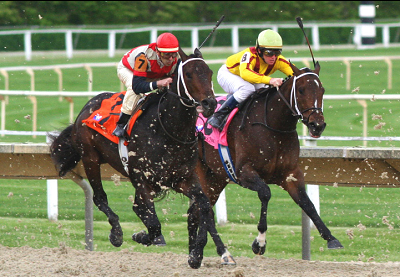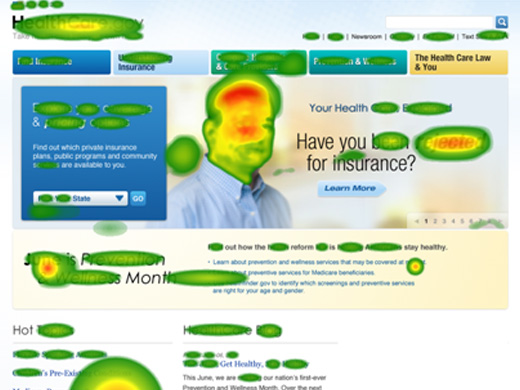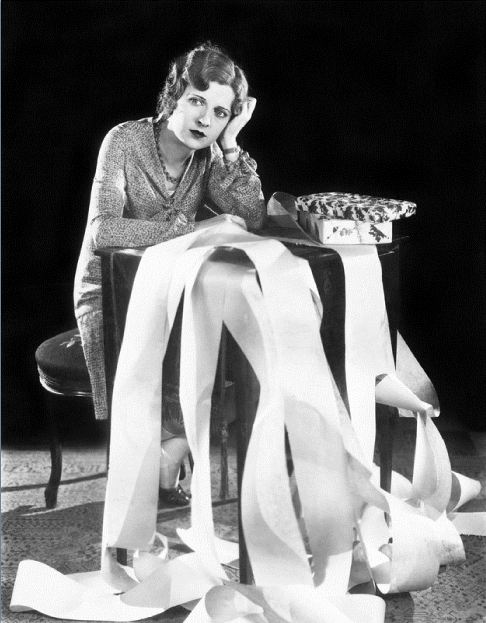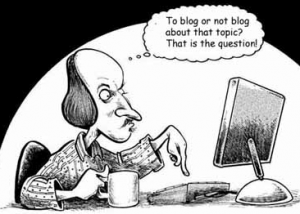Business Blog Post Ideas Include Ideas about Visuals
By Jaco Grobbelaar on Mon, Jun 23, 2014 @ 07:55 AM

 The layout of your blog page can invite or turn off a visitor in the first 8 seconds.
The layout of your blog page can invite or turn off a visitor in the first 8 seconds.
Marketing—every business does it, whether you do it yourself or you outsource it. Without a marketing plan, you will be left in the dust while your competition is out the gate and around of the first turn. What can you do to pass your competition? A little history lesson at this juncture might help.
You might remember the good old days when the newspaper advertising salesman called on you to sell you ads in different sizes for so many days a week or a month. You saw the Yellow Page salesman once a year. You submitted PR to surrounding cities, organizations and visitor magazines hoping to get your business visible. Ah yes, remember the good old days when an ad was an ad was an ad.
Times have changed, haven’t they? Now, you are expected to have the newest thing in websites, consistently adding new blog post articles, social media posting and watching for comments - all this extra work while still doing the job that pays your bills. How do you have time to come up with business blog post ideas and how do you find out how to create compelling visuals?
We go into more information on finding business blog post ideas on our free 83-page eBook, An Introduction to Busines Blogging, that you can get clicking here.
Business blog post ideas don’t just encompass what you write, they also encompass ideas about the visuals you create to show off your compelling articles. One way to know how to create these visuals is through a scientific method called eye tracking.
How can eye tracking help me come up with visually good business blog post ideas?
Let's look at images, visuals, and how people look at your blog posts. Why is this important? The layout of your blog page can invite or turn off a visitor in the first 8 seconds, according to Neil Patel.
If your post is --
- word-heavy with long paragraphs
- has too little white space
- has no photos or images or they are in the wrong place
- has no breaks using sub-headlines, and
- has no different sized print and bullet points
-- a reader will bounce off your blog without reading it. This would not be a good business blog post idea.
![]() In case you are wondering - there are studies using eye tracking tests to back this information up. Now before you read what I am going to say, let me offer a caveat. You do not have to do your own costly scientific study to see how to improve your visual business blog post ideas. All you need to do is learn from the public information done by others.
In case you are wondering - there are studies using eye tracking tests to back this information up. Now before you read what I am going to say, let me offer a caveat. You do not have to do your own costly scientific study to see how to improve your visual business blog post ideas. All you need to do is learn from the public information done by others.
What is eye tracking and how is it done?
Neil Patel explains eye tracking in his article 8 Powerful Takeaways from Eye Tracking Studies, April 2014. He said:
Eye tracking basically measures where people look on a web page and for how long. Eye tracking data is presented visually, overlaid on the screen that the subjects were looking at, similarly to the image above.
With eye tracking, you can discover where a person looked first, second, third, and so on. You can find out what the user considers to be the most interesting part of the screen and how long he or she looked at certain areas.
Graham Jones does a good job of talking about the pros and cons of using eye tracking data in his article When businesses use eye tracking data to help them design their website they could be missing vital information about their web visitors, June 2014.
While Neil told us what eye tracking was, Graham explains how it is done:
Eye tracking studies use specialist monitors which have several small cameras around the edge that together can provide an accurate position of the direction in which the pupils are looking. The cameras also produce data which shows how long a particular area on the screen was focused on. This leads to the production of a chart showing where the pupils were fixed and where they were moving. This chart is overlayed on the web page itself to produce what is known as a “gaze plot”, which shows where the pupils were fixed on a particular point and where they were moving. Typically, a gaze plot shows that people focus on a wide variety of points on a page, moving their eyes quickly and somewhat randomly around the page.
How will this help me with my visual business blog post ideas?
While the person looks randomly around the page, there are things that attract the eye first or hold the attention longer. Each person will react to the page differently, but a pattern emerges with enough participants. The scientist have been able to draw inferences from this information about the best places and how a blogger should design his blog page.

Neil lists 8 results of these studies and how a writer can improve the page. Basically Neil says:
1. Put your most valuable content above the fold
2. Put calls to action at the bottom of the page
3. People read big, bold headlines
4. Chunks of information are best, (easy to scan with bullets and subheadings—Jaco)
5. You need a lot of white space
6. The left side of your page is important
7. Get rid of banners
8. Pictures of people are good
Here some other good ideas:
- People spend 80% of their time reading above the fold (the part of the article that is visible when the person first lands there)
- People who scroll down only look below the fold 20% of the time
- People spend 69% of their time looking at the left half of the webpage and 30% viewing the right side
- You will want to have one or more images on the page
- Pictures of faces will draw the eye more than any other image
- Images that are unexpected gather more attention
- Infographics hold readers on the page longer as they are attention-grabbers
So what is wrong with using eye tracking technology?
Graham says:
Eye tracking equipment only really measures the direction of the gaze and fixations of the eye. Yet we do not see with our eyes. Our eyes merely turn light into electrical signals that can be interpreted by the brain. We see with our brain.
Eye tracking studies, whilst showing us useful information as to how people travel around a web page and how long they spend looking at things, does not tell us what people see. And yet that is the really useful information we want to know.
The scientist cannot see what the brain of the reader is reacting to - whether it’s confusion (long gaze time) or short hops meaning a very interesting things going on all over the page (short gaze time). Therefore, the amount of time a person gazes at a part of the blog page can be misleading.
Having a study in eye tracking done on your specific marketing site would probably be a waste of money; however, you can use the general informational techniques to create interesting visual blog post ideas so appealing that people stay to read or at least skim the entire page.
This infographic from Crazy Egg and Single Grain shows as both a visual and an informational example of what scientists have discovered.
![]()
Now that you have begun thinking about ways to make your business blog post ideas pop, you can learn about business blogging from our free eBook An Introduction to Business Blogging.
Image: http://www.tobii.com/en/about/what-is-eye-tracking/
Images: http://www.usability.gov/how-to-and-tools/methods/eye-tracking.html
 Jaco Grobbelaar is the owner of BroadVision Marketing. BroadVision Marketing works with business owners to put in place inbound and outbound marketing strategies that consistently secure new clients. The BroadVision Marketing Training Center is located in Petaluma, CA and primarily serves companies in the San Francisco Bay area.
Jaco Grobbelaar is the owner of BroadVision Marketing. BroadVision Marketing works with business owners to put in place inbound and outbound marketing strategies that consistently secure new clients. The BroadVision Marketing Training Center is located in Petaluma, CA and primarily serves companies in the San Francisco Bay area.
Jaco can be reached at jaco@broadvisionmarketing.com or 707.766.9778 or connect with Jaco on Facebook - www.facebook.com/broadvisionmarketing - and LinkedIn - www.linkedin.com/in/JacoGrobbelaar. He can also be found at Jaco+.
You May Also Like
These Related Stories

5 Tips For Blog Post Ideas And Why It Matters [Infographic]

40 or So Blog Post Ideas for Dummies

.png?width=302&height=75&name=BVM%20Logo%20-%20transparent%20(1).png)


No Comments Yet
Let us know what you think